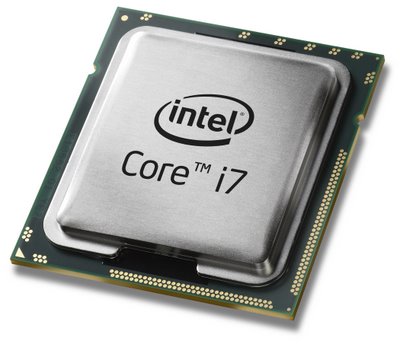
The big news at the tail end of last year was the launch of Intel’s brand new Core i7 chip. Codenamed Nehalem, the Quad Core chip features a brand new architecture, which represents one, if not the biggest architectural shifts in Intel processors for ten years.
Core i7 systems are shipping now from the specialist systems builders such as CAD2, Xworks and Scan, and we should start to see Core i7-based workstations from the likes of HP, Dell, Fujitsu Siemens and Lenovo in the next month or so.
So what is all the fuss about? There are three major architectural changes to
Core i7 that not only look good on paper, but should have a real impact on the way users work with CAD/CAM/CAE and rendering applications, so let’s have a look at each of these in turn.
FASTER MEMORY
At the heart of this new architecture is a change in the way the chip accesses memory. Instead of the CPU communicating with the memory via the Front Side Bus, Core i7 can receive data directly from the system RAM. If this sounds familiar, that’s because it is, as AMD pioneered this integrated controller strategy with its Athlon & Opteron processors a few years back.
With Intel’s Front Side Bus architecture, which is used on the Core 2 Duo and many generations before, there was a lot more latency when accessing memory. Now with Core i7, applications that access a lot of memory, frequently, will see a benefit. This is why AMD’s Opteron has remained a popular choice with certain CAE users, despite it being slower in most mainstream applications.
The other change in the memory architecture is that the new memory controller has three channels to the RAM which means that Core i7 systems will work best when memory modules are in multiples of three, as opposed to two. This means we are likely to see workstations with 3GB, 6GB and 12GB memory instead of the usual 2GB, 4GB, and 8GB.
HYPERTHREADING
All Core i7 CPUs have four cores as standard, but they also feature a technology called HyperThreading, which simulates additional threads so each chip actually has eight logical cores.
HyperThreading first came to market with the Pentium 4, but was abandoned for the Core 2. It uses spare CPU cycles on each physical core to simulate additional cores, and these can be seen when you bring up the Windows System Performance Dialogue.
The technology only works with certain multi-threaded applications, and can cause confusion when a process assigns itself to a ‘logical core’ even when there is a physical core sitting around doing nothing. Our limited tests show that it does make a small but significant difference in rendering applications such as 3ds Max.
TURBO MODE / OVERCLOCKING
Core i7 features a new Turbo Mode technology which can automatically adjust the speed of the cores dynamically. The chip can literally switch off those cores that are not being used and channel additional power to the remaining cores.
Intel claims that for single threaded applications (of which most CAD applications are) the speed of a single core can be boosted by around 400MHz.
While Turbo Mode can dynamically adjust the speed of the CPU, specialist workstations manufacturers are looking to get more out of each piece of silicon by overclocking or permanently increasing the speed of chips.
With Core i7 and indeed Core2 Duo, Intel has built in a lot of headroom into its chips. Some say this is because it has no real incentive to sell faster CPUs at this moment in time, because it could jeopardise future sales if the performance leap is too high.
The good news is that those in the know are able to get more out of the chips for no additional cost, safely overclocking them by around 20%.
Overclocking has never really been used in the CAD/CAM/CAE sector, simply because reliability has been deemed more important than performance. However, even with standard cooling solutions, specialist workstation vendors are now offering overclocked systems. But this is not pony tailed geeks in bedrooms with soldering irons, the system builders are extremely confident that the silicon will not be damaged by overheating and this is being backed up with three year warranties.
At DEVELOP3D, we don’t expect overclocking to be embraced wholeheartedly by customers, simply for fear of unreliability. However, if confidence grows, and specialist workstation manufacturers continue to push overclocked systems, it will be very interesting to see what impact this has on the Tier One Vendors as the likes of HP, Dell and Lenovo will have to play by the rules and ship systems at Intel’s published speeds. And with the top-end 3.2GHz Core i7 chips costing around £700 it’s not only a performance advantage that we’re talking about here. Specialist system manufacturers are already offering 2.66GHz Core i7 chips clocked up to 3.2GHz for under £300, so price/performance could also become a major differentiator.
CONCLUSION
Core i7 is a huge leap forward for Intel, introducing a number of new technologies, which not only improve efficiency in multi-threaded applications but enhance performance in single threaded applications. As with any new technology, prices are high at the moment, but deals can be had on overclocked systems and expect significant cuts later this year.






